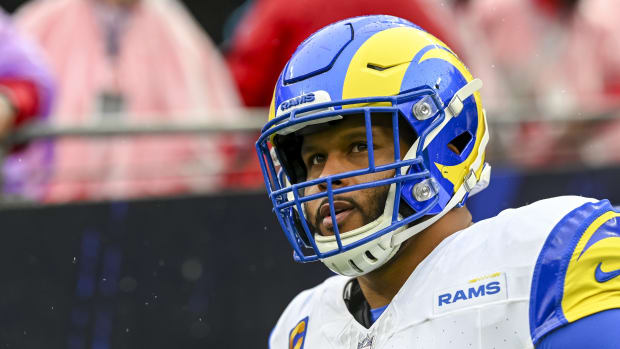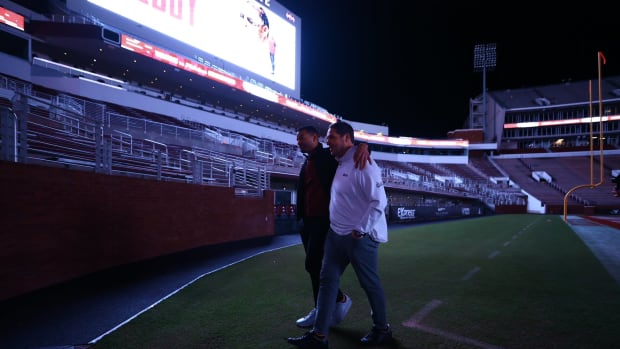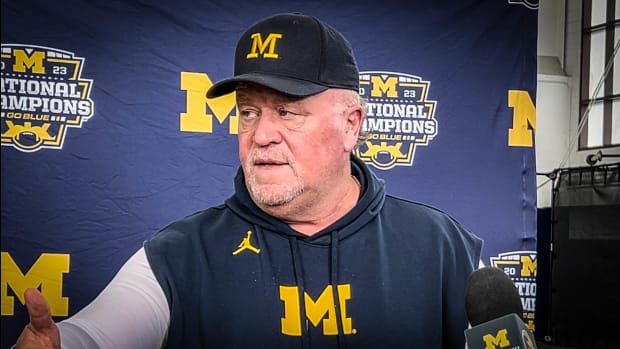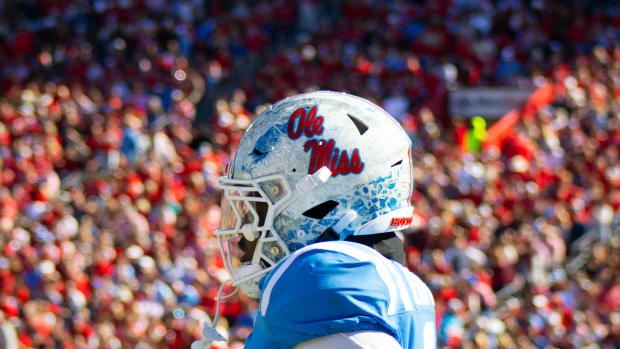From Nation's Leading Rusher to Wisconsin Track Weapon, Jonathan Taylor Keeps Running
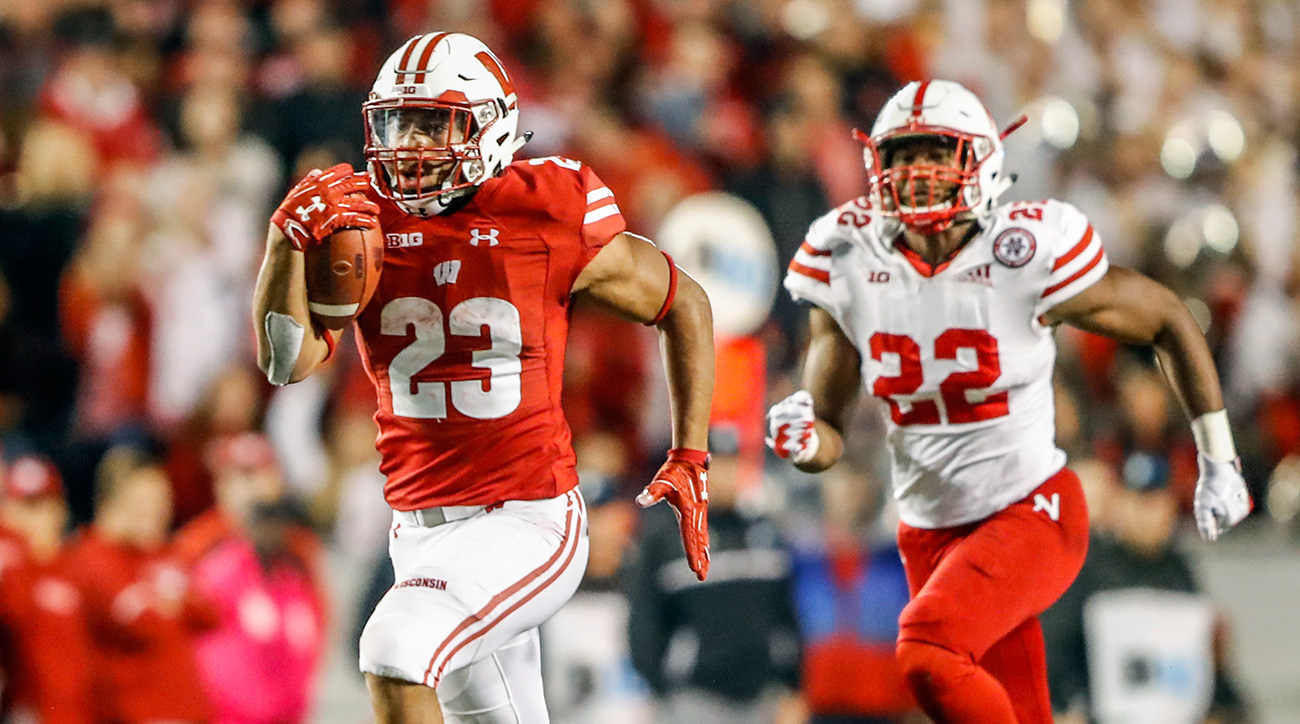
When Jonathan Taylor arrived at Wisconsin in 2017, he was in position to see the field immediately. A three-star recruit from Salem, N.J., he knew the transition to college football would be challenging from the start, but he had a long-term goal off the gridiron, too: Not only did he want to anchor the Badgers’ famed ground game, he also wanted to try his legs on the track team one spring.
You have reached your limit of 4 premium articles
Register your email to get 1 more
Taylor finished his freshman season with 1,977 rushing yards on 299 carries, the Big Ten’s leading rusher. The following spring, he was focused on building on that performance—there was no time for track. But Taylor’s other sport was still in the back of his mind as he prepared for the 2018 season, then led the FBS in rushing yards with 2,194 on a whopping 307 carries. Over the winter, he floated a plan to coach Paul Chryst, running backs coach John Settle and Mick Byrne, Wisconsin’s director of cross country and track and field. Taylor knew he needed to attack spring ball and set concrete targets for what he wanted to achieve—but if he did, he wanted to run. Chryst consented to the idea, allowing Taylor to skip the final week of football in April to begin practicing with the track team for the 4x100 relay.
Because he’d always hoped to try out track at the college level, Taylor had picked the track coaches’ brains over the past two school years to get some idea of the schedule and what training would look like. But he knew just one other track athlete, sprinter Stacey Boyd, from a class they’d both taken, and he admits it has been draining to go right from football into a new sport as the rest of his teammates settle in to rest and study for finals.
Taylor’s body had to acclimate to a completely different training regimen, too. “Now it’s a lot of speed and acceleration training,” he says. “You’re running a lot more with track, because that’s its sole purpose. Football, there’s a lot of strength training components to it, and track, weightlifting has a speed component. You’re lifting for speed, not so much power.
“After training so hard in one specific way and then switching over and training in a different way, your body definitely responds.”
Taylor made his debut the last weekend of April at the Penn Relays, about a 45-minute drive from his hometown. The decision to run in Philadelphia first was a calculated one: Not only would Taylor have enough practices under his belt to compete, coaches thought he might benefit from the familiar environment: In his two years at Wisconsin, Taylor has never gotten to play a football game so close to home. His 4x100 relay team finished 23rd with a time of 42.0 seconds, just slightly better than the time his Group 1 state-title winning relay team ran in his senior year of high school. Last Friday, at the Badgers’ lone home meet of the spring, Taylor’s relay took .8 seconds off its time and beat the only other team running, Marquette.
He’ll compete again this weekend at the Big Ten Championships. From there, his relay has a chance to qualify for the NCAA regionals event, held May 23–26 in Sacramento.
Taylor’s weight—he was listed at 5'11" and 214 pounds last football season—has stayed steady through these first few weeks of track. After so many months of trying to put on a pound or two for football, he’s now eating to maintain his weight, if not shave off a bit. He’s not worried about any long-term changes to his physique from a few months of increased cardio and a different brand of weightlifting, though.
“[Track] definitely complements football,” Taylor says. “The way you generate power, a lot of people try to run as fast as they can, move their legs as fast as they can. With track, we do all the technical work and learn a lot about more things that go into running fast, in terms of making sure you squeeze your knee at the top to generate as much force as you can. I feel like they’re definitely [complementary] and I can’t wait to show it on the field.”
Taylor, who will be eligible for the 2020 NFL draft, has looked the part of a future first-round pick in his two seasons. And in an era where so many players of his ilk will do anything they can to guard against an injury before their first big paycheck, a running back of Taylor’s caliber competing in a second sport is rare. But those worries don’t faze him because he understands the risk inherent in running and how to mitigate it.
“You’re taking a risk anytime you step out on a football field, so going out in a new sport, you just have to do everything you do with football,” he says. “You have to make sure you’re prepared to do whatever you’re about to do. You’ve got to make sure you know what you’re about to do. And you’ve got to make sure you know the correct way to do what you’re about to do, so that you’re in the best place possible to minimize that risk.”

